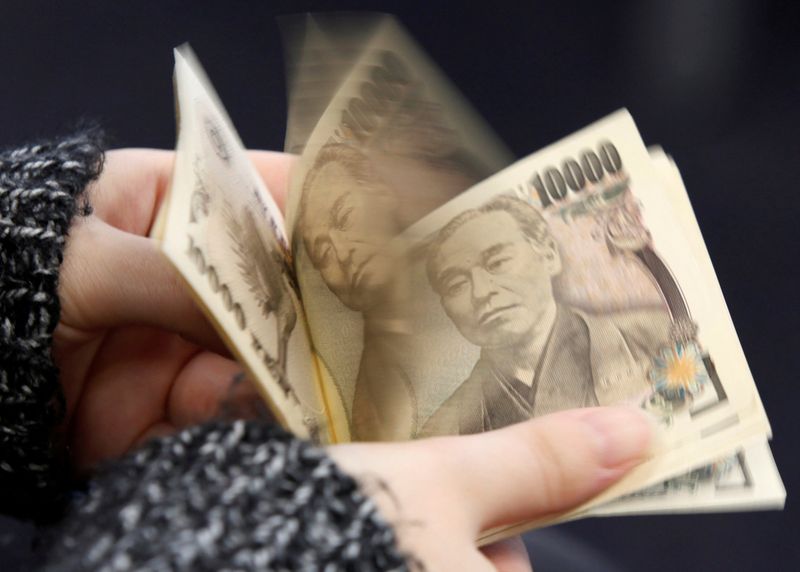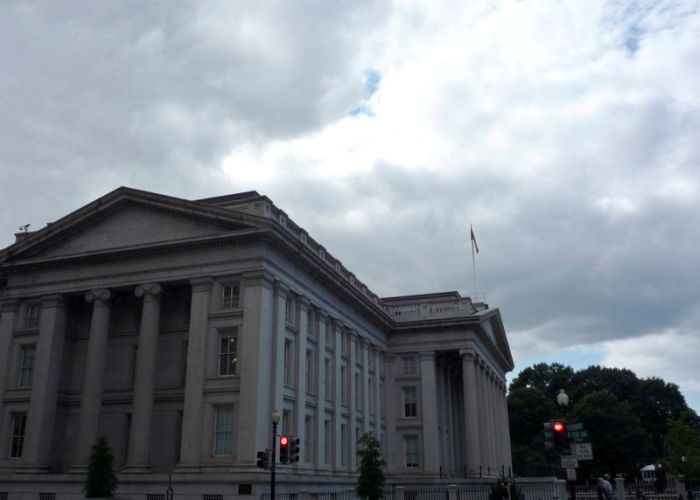NEW YORK (Reuters) – The Japanese yen bounced from a fresh two-decade low on Wednesday after the Bank of Japan stepped into the market again to defend its ultra-low interest-rate policy, drawing a sharp contrast with the Federal Reserve’s aggressive tightening path.
Increased nervousness around verbal intervention and growing speculation around an impending bilateral meeting between U.S. Treasury Secretary Yellen and her Japanese counterpart also prompted traders to pare back short bets on the yen.
The U.S. dollar hit 129.43 yen on Wednesday for the first time since April 2002 earlier in the session, before easing to 127.79 yen, down 0.8%.
“Many are watching 130 as a key level, but we view 135+ as a more formidable line in the sand,” wrote Mazen Issa, senior FX strategist, at TD Securities in a research note.
“This upleg broke the post-Plaza Accord multi-decade trendline, which keeps dollar/yen ordinates higher and exposes upside potential to 150,” he added, referring to a previous multi-country agreement among developed economies to depreciate the dollar against their respective currencies.
The BOJ again offered to buy unlimited amounts of Japanese government bonds to check the rise in Japanese 10-year yields, which were butting against its 0.25% tolerance ceiling.
“Unless the Fed abandons hikes or the BOJ unlikely adopts them, dollar/yen will be at the beck and call of the Fed’s terminal rate, which likely remains too low and will not be established until well into the tightening cycle,” Issa said.
Traders also said the dollar’s fall against the yen also coincided with a slide in U.S. Treasury yields. After hitting three-year peaks earlier in the session just off the 3% mark, benchmark 10-year yields slid nearly 7 basis points to 2.8455%.
“U.S. yields backed off and that gave an excuse for dollar/yen to come off the highs,” said Erik Bregar, director, FX & precious metals risk management at Silver Gold Bull in Toronto. “That also gave an excuse for euro/dollar to bounce because that is also yield-sensitive.”
Still, positioning in derivatives and currency futures suggest the yen weakness has more room to run.
In contrast, 10-year Treasury yields had earlier marched to three-year highs while inflation-adjusted bond yields hit positive territory for the first time since March 2020, as hawkish comments by policymakers reinforced expectations of hefty U.S. interest rate hikes.
Elsewhere, the euro was the other big gainer after media reports that some ECB policymakers were forecasting a first rate hike as early as July. The single currency was last up 0.5% at $1.0839.
The dollar index, which measures the currency against six major peers including the yen, matched Tuesday’s high at 101.03 – a level not seen since March 2020 – before slipping to 100.36, down 0.6% on the day.
An index of currency market volatility firmed above 8% but still well below 2022 highs of 10% hit in March.
========================================================
Currency bid prices at 3:09PM (1909 GMT)
Description RIC Last U.S. Close Pct Change YTD Pct High Bid Low Bid
Previous Change
Session
Dollar index 100.3700 100.9700 -0.57% 4.920% +101.0300 +100.2100
Euro/Dollar $1.0841 $1.0788 +0.51% -4.62% +$1.0867 +$1.0785
Dollar/Yen 127.7900 128.9100 -0.88% +10.99% +129.3950 +127.4650
Euro/Yen 138.54 139.03 -0.35% +6.31% +139.6700 +138.4100
Dollar/Swiss 0.9489 0.9524 -0.37% +4.02% +0.9536 +0.9455
Sterling/Dollar $1.3054 $1.3001 +0.45% -3.44% +$1.3070 +$1.2995
Dollar/Canadian 1.2503 1.2621 -0.93% -1.11% +1.2624 +1.2473
Aussie/Dollar $0.7440 $0.7378 +0.87% +2.37% +$0.7458 +$0.7373
Euro/Swiss 1.0288 1.0273 +0.15% -0.78% +1.0301 +1.0248
Euro/Sterling 0.8304 0.8297 +0.08% -1.14% +0.8335 +0.8284
NZ $0.6796 $0.6736 +0.91% -0.70% +$0.6813 +$0.6735
Dollar/Dollar
Dollar/Norway 8.8135 8.8350 -0.24% +0.05% +8.8380 +8.7725
Euro/Norway 9.5567 9.5308 +0.27% -4.56% +9.5808 +9.4978
Dollar/Sweden 9.4494 9.5352 -0.43% +4.78% +9.5509 +9.4224
Euro/Sweden 10.2456 10.2894 -0.43% +0.11% +10.3015 +10.2235
(Reporting by Gertrude Chavez-Dreyfuss; Additional reporting by Saikat Chatterjee in London; Editing by Chizu Nomiyama and Bernadette Baum)























